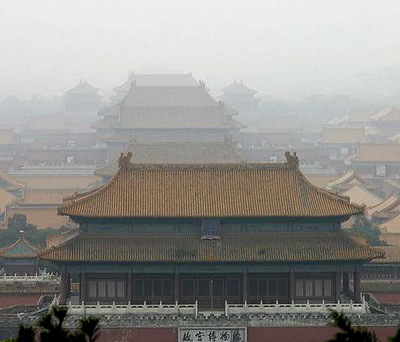Frances Beinecke, President of NRDC, New York City
When President Obama travels to China to talk with President Xi Jinping, climate change is certain to be on the agenda. Both nations top the ranks of climate change polluters, and both nations are grappling with the consequences. California is in the grip of a prolonged and costly drought that scientists have linked to climate change. And Beijing is plagued by air pollution from coal power plants that can reach 25 times above World Health Organization standards.
Dangerous pollution is making its presence known in the US and China. It is also spurring action.
After years of delay and deflection, both nations are making real progress curbing climate change emissions. Now that momentum is building, China and the US can act as true leaders in next year’s climate talks when the international community will set pollution reduction targets for 2025 and beyond.
We know China and the US can commit to making significant cuts. We know because they are already moving in the right direction.
China, for instance, is doing far more to cut emissions than most Americans realize. It has created seven regional cap-and-trade programs for carbon pollution and plans to expand to a nationwide carbon market in 2016. It also installed more wind turbines and more solar power last year than any other nation.
China still consumes half the world’s coal, creating an enormous public health and climate challenge. Yet even here we are seeing a possible turning point. China’s demand for coal declined in the first three-quarters of this year as its GDP continued to grow, and some analysts predict that coal use in China may peak as soon as this year.
China has its own reasons to transition away from coal, including the mounting health hazards from pollution and the need to diversify it economy. NRDC is working with Chinese research partners to turn regional limits on coal use into a national cap on coal consumption to help accelerate the shift.
A peak in coal consumption doesn’t necessarily lead to a peak in carbon pollution, since transportation and other sectors also generate emissions. But it is a significant milestone. And at the UN Climate Summit last month, China announced it will work to peak its carbon pollution as soon as possible.
Meanwhile, here in the US, the Obama Administration has also taken important steps to reduce climate change pollution. Two years ago, it raised fuel economy standards to 54.5 miles per gallon by 2025. These new standards will cut carbon pollution from new cars in half and save drivers $80 billion a year at the pump by 2025.
And this June, the administration proposed the first-ever national limits on carbon pollution from power plants—the single largest source of US emissions. The agency’s initial proposal calls for reducing carbon pollution by 26 percent from 2005 levels by 2020. That is a good start, but NRDC analysis shows stronger standards would allow the US to reach 36 percent by 2020 and 39 percent by 2025.
These stronger standards are within reach, especially since our nation continues to expand its clean energy resources. Solar and wind power account for 44 percent of all new electricity generating capacity in the US from 2012 to 2013. And a recent set of updated efficiency standards for appliances will help reduce carbon pollution equivalent to emissions from 25 coal-fired power plants by 2035.
Both the US and China are making important gains, but we can’t stop now. The scale of the climate crisis demands bold and ambitious actions. Our nations must continue reducing carbon pollution, and we must commit to deeper cuts for 2025 and beyond. Progress on the ground shows we can achieve these goals and help lead the way to a more sustainable future.
